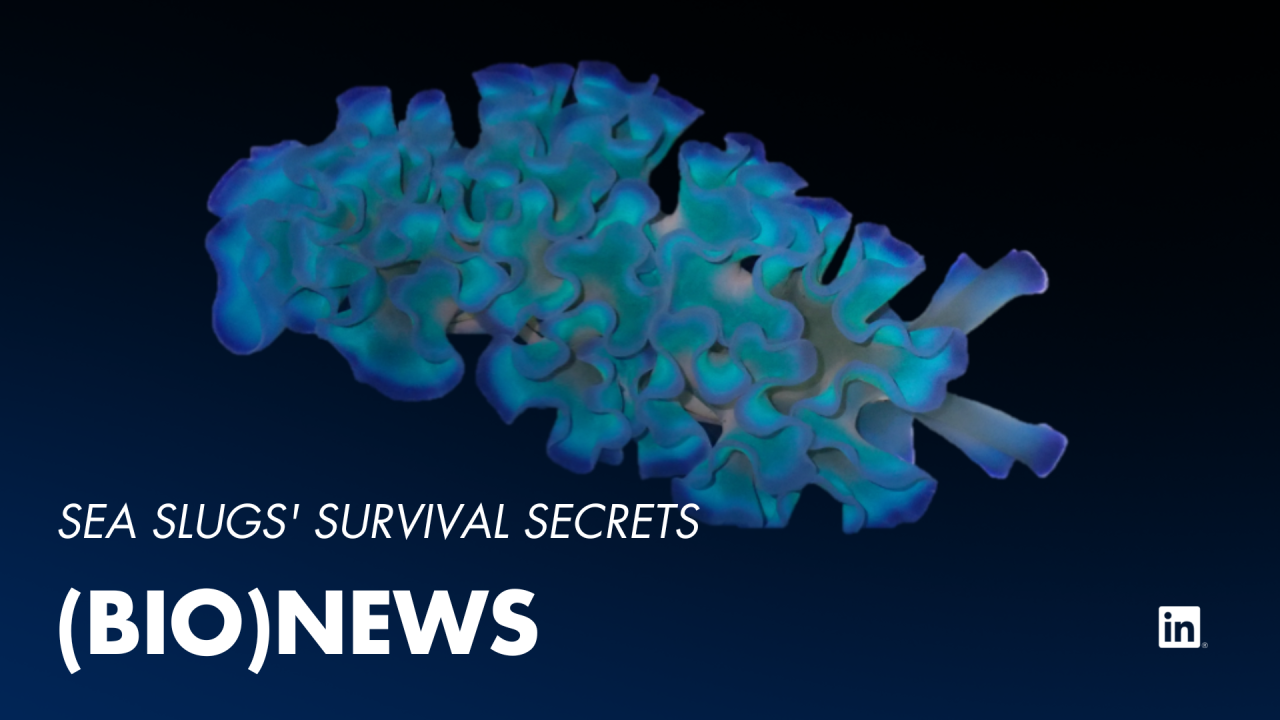
Sea Slugs' Survival Secrets
(BIO) NEWS research edition. Every edition we highlight 1 article with the latest nature news from the six Dutch Caribbean Islands focused on research and monitoring. As always you can find our complete list of articles HERE. As well as an overview of recent publications, current research and monitoring activities and needs at the end of this newsletter.
A recent study conducted by the University of Groningen, investigated how three species of solar-powered sea slugs exhibit unique photoprotection strategies against excessive light, revealing connections between light intensity, photoprotection, and oxidative stress. The study underscores the necessity of exploring aquatic photosynthesizers under natural lighting conditions.

A recent study sheds light on the photoprotective strategies employed by three sea slug species—Elysia crispata (lettuce sea slug), Elysia velutinus, and Elysia ornatae (ornate leaf slug)—living in high-light environments. These slugs steal chloroplasts (the organelle that makes energy from sunlight in plants and algae) from the algae that they eat. These stolen chloroplasts (kleptoplasts) keep making energy once they are inside the slug. In this paper, we showed that these slugs protect their kleptoplasts from too much light, allowing them to make more energy, which the slug then uses
Meet the Team
Elysia crispata, more commonly known as the lettuce sea slug, was typically found at depths between 5 and 15 meters. These sea slugs have diverse coloration, which can suggest population-specific variations in light-seeking behavior. Unlike previous reports of hiding behavior, this study observed lettuce sea slugs exposed to full sunlight and using its own body to provide shading. This behavior demonstrated the species' ability to physically control light reaching its kleptoplasts.
Elysia velutinus, was found to prefer depths of 4–6 meters and relied on macroalgal food for camouflage, exhibited a light-avoidance response in laboratory trials. The study suggests that these slugs likely avoid excess light by seeking shelter among algae, displaying a unique photoprotective strategy.
Elysia ornata, or ornate leaf slug, typically resides in shallow waters and is associated with Bryopsis plumosa (green) algae. These sea slugs displayed a strong negative phototactic response, indicating a preference for darkness. Despite having the highest optimal light intensity among the studied species, ornate leaf slugs showed signs of oxidative stress, possibly due to limited photoprotective mechanisms.
The sea slug species were collected from the reefs in Curaçao.

Implications
The study emphasizes the need to consider natural light conditions when studying photosymbiotic organisms, revealing a disparity between laboratory experimental conditions and field reality. The intricate photoprotective adaptations observed in these sea slug species provide valuable insights into their interactions with high-light environments and highlight the importance of understanding the ecological context for accurate research findings.
Publications Check out recent reports and publications on biodiversity related subjects in the Dutch Caribbean HERE
Research & Monitoring Projects Stay up to date with projects in the Dutch Caribbean via our project overview HERE.
Guidelines for Design & Conduct of Research & Monitoring Projects See our recommendations HERE.
The Dutch Caribbean Nature Alliance (DCNA) supports (science) communication and outreach in the Dutch Caribbean region by making nature related (scientific) information more widely available through amongst others the Dutch Caribbean Biodiversity Database, DCNA’s news platform BioNews and through the press. This article contains the results from several (scientific) studies but the studies themselves are not DCNA studies. No rights can be derived from the content. DCNA is not liable for the content and the in(direct) impacts resulting from publishing this article.
BioNews is funded by the Ministry of Agriculture, Nature and Food Quality (LNV). DCNA’s activities are generously supported by the Dutch Postcode Lottery.
Thanks to local conservation efforts, nature on our islands is protected. We want you and your loved ones to be able to enjoy it for many years to come. Want to help? Donate here: https://dcnanature.org/donate/
Saba Conservation Foundation Aruba National Park Foundation (FPNA)
St. Eustatius National Parks (STENAPA) Nature Foundation Sint Maarten
Carmabi Ministerie van Landbouw, Natuur en Voedselkwaliteit University of Groningen